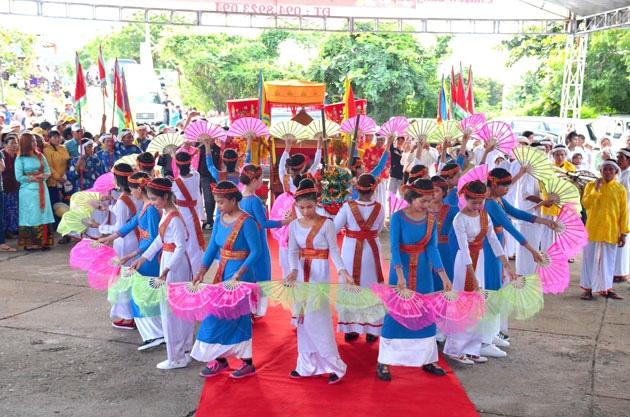


|
A procession of Po Sah Inu Goddess costumes was held at the
Po Sah Inu Tower in Phan Thiet City, followed by traditional rituals and
dances with Gi Nang drums and Saranai trumpets.
The festival offers visitors a chance to enjoy unique folk
songs, dances and music with the Cham people, as well as the chance to
participate in games and demonstrations of brocade weaving and pottery.
The Kate festival will be celebrated in each village and
family throughout the seventh month of the Cham calendar.
Various cultural activities, such as art shows, traditional
costume displays, culinary exhibitions and traditional writing competitions,
are being organised in the province.
During this year’s Kate festival, local authorities are
paying a visit to the region and giving gifts to the Cham people in the
province. The purpose of the Kate festival is to thank the Gods and promote
their traditional culture and arts.
|
Source: NDO